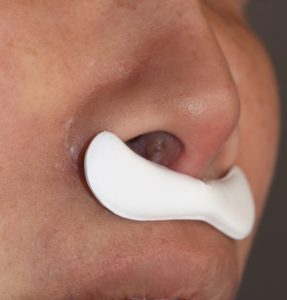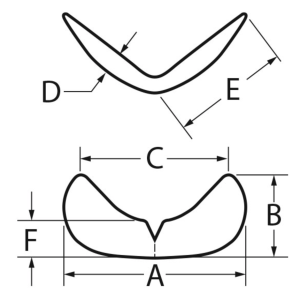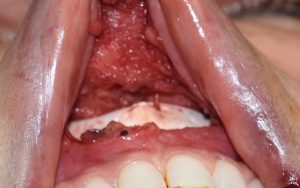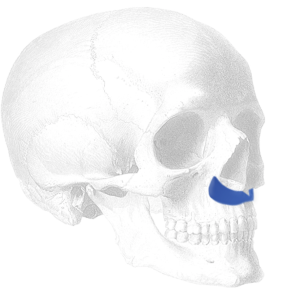
1. Preoperative Consideration and Preparation
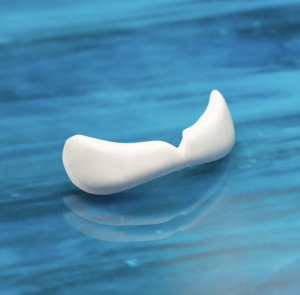
Preoperative nostril width always need to be assessed in any form of nasal nasal base augmentation as nostril widening can occur in some patients. If nostril width is not a preoperative concern then no adjuctive treatment is needed. If such concerns exists then either an internal alar base cinch suture or an internal wedge resection nostril narrowing procedure should be considered.
A.Sterile prep is done in the usual manner. (intraoral Peridex 0.12% chlorhexidine or Betadine gauze packing under upper lip)
B.Procedure can be performed under local, IV sedation or general anesthesia.
2. Incision and Pocket Dissection
There are two surgical approaches to premaxillary implant placement, intraoral and intranasal. Both can be effective approaches and are their choice depends on each surgeon’s experience/preference. Either approach begins with infiltration with a 1% Lidocaine and 1:100,000 epinephrine solution for hemostasis.
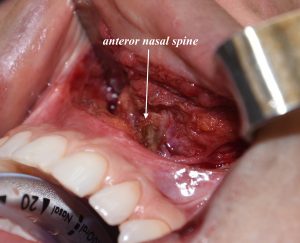
For the intranasal approach, paired columellar base incision at the skin-mucosa junction. Using an elevator the anterior nasal spine and identified by feel and subperiosteal dissection widely done along the nasal base out under the nostrils. This is a more blinded pocket dissection than the intraoral approach.
3. Implant Selection and Placement

ePTFE permxillary implants are easily customizable with a scalpel (#10 or #15 blade) to modify their side to side length, depth of the central upper notch or any of its edges. Besides making it fit comfortably into the width of the pocket it should fit well under the anterior nasal spine using the central notch.
Prior to placement of the implant it should be washed/soaked in a betadine or antibiotic solution.
4. Implant Fixation and Closure
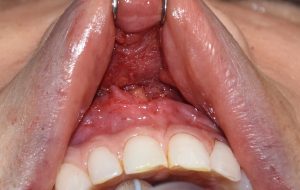
After irrigating the implant and its pocket with an antibacterial solution a two layer closure of the muscle and intraoral mucosa is done over the implant is done.
Summary
A premaxillary implant provides a central nasal base augmentation effect that is often beneficial in the patient with a midface skeletal hypoplasia or recession. It helps push out and open up the nasolabial angle and adds projection to the central upper lip. Iy differs from the paranasal implant which adds projection to the base of the nostrils and out more laterally in the canoe fossa area. Its ePTFE material composition makes it very adaptable, easily placed and permits postoperative tissue ingrowth/fixation to its suffices.
Dr. Barry Eppley
Indianapolis, Indiana



